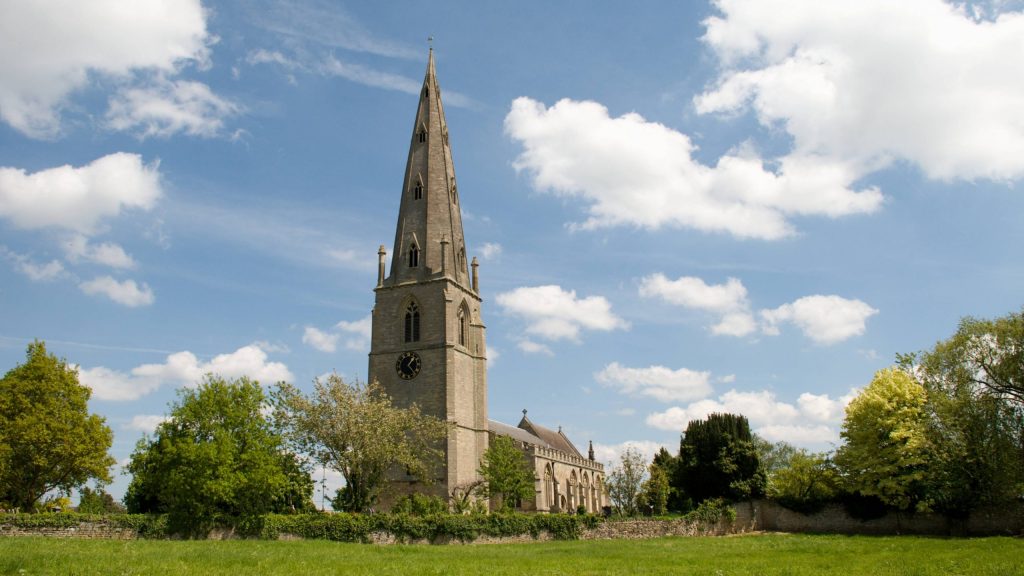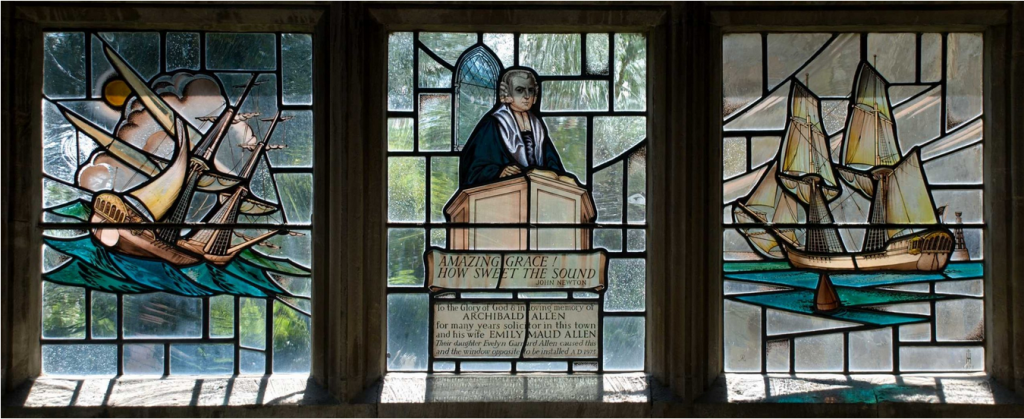In 2023 the hymn “Amazing Grace” celebrated its 250th Anniversary. Written in 1772 by John Newton, an Anglican clergyman of a rural church, Saint Peter and Saint Paul in the market town of Olney in Buckinghamshire, England. The hymn was first published 1779 as part of the Olney Hymns and has become immensely popular where it is sung for both religious services and funerals. The hymn conveys the message that forgiveness and redemption are possible regardless of sins committed and that the soul can be delivered from despair through the mercy of God.
“Amazing Grace” is one of the most recognizable songs in the world with an estimate that it is performed about 10 million times annually, and recorded thousands of times by such performers as Andrea Botticelli, Sarah Brightman, folk singers Peter, Paul and Mary, Judy Collins, and Dutch soprano Amira Willighagen.

Newton wrote the words from personal experience. At an early age he was forced into service with the Royal Navy, and after leaving the service, he became involved in the Atlantic slave trade. In 1748, a violent storm off the coast of Ireland battered the ship so severely that he called out to God for mercy to save the ship. This marked his spiritual conversion, but he continued slave trading until 1755, when he ended his seafaring altogether. He began studying Christian theology and later became an abolitionist. He joined forces with William Wilberforce to lead the campaign to abolish the slave trade, which culminated in the Slave Trade Act 1807 and 1833.
Ordained in the Church of England in 1764, Newton became the curate of the church in Olney, Buckinghamshire, where he began to write hymns with poet William Cowper.(1731-1800)
“Amazing Grace” was written to illustrate a sermon on New Year’s Day 1773.
In the United States, “Amazing Grace” became a popular song used by Baptist and Methodist preachers as part of their evangelizing, especially in the American South. It has been associated with more than 20 melodies, and in 1835, American composer William Walker set it to the tune known as “New Britain” , and this is the version most frequently sung today.

Olney in the 1770s was a village of about 2,500 residents whose main industry was making lace by hand. The people were mostly illiterate and poor. Newton shared many of his own experiences from the pulpit and became involved in his parishioners’ lives and was much loved. He became friends with William Cowper, who had gone through a similar spiritual conversion to Newton. The lyrics in Olney Hymns were arranged by their association to the Biblical verses that would be used by Newton and Cowper in their prayer meetings.
I am familiar with Onley as my grandmother and her family lived there until she met and married my grandfather during the First Word War. As a teenager I would visit my grandmother’s relatives and together we would walk to the church. I remember the stained-glass windows depicting John Newton and the slave ship “The Greyhound.”
Saint Peter and Saint Paul Church. The church stands on the bank of the River Great Ouse and, with its fine spire, dominates the southern approach to the town. It was founded in 1018. The greater part of the present church was built in the fourteenth century between 1330 and 1400. The finest feature of the church is the spire, set on a tall tower, it reaches a height of 185 feet. The tower originally housed a peal of six bells, the oldest of which is dated 1599. Among the graves are those of John Newton and his wife, Polly.
William Wilberforce (24 August 1759 – 29 July 1833) was a British politician and a leader of the movement to abolish the slave trade. A native of Yorkshire, England he began his political career in 1780, and became a Member of Parliament for Yorkshire (1784–1812). In 1785, he underwent a conversion experience and became an Evangelical Anglican, which resulted in major changes to his lifestyle and a lifelong concern for reform. Wilberforce supported the campaign for the complete abolition of slavery and continued his involvement after 1826, when he resigned from Parliament. He led the Slavery Abolition Act 1833, which abolished slavery in most of the British Empire. Wilberforce died just three days after hearing that the passage of the Act through Parliament was assured.

References and Footnotes
For more information on John Newton and William Cowper visit the Newton and Cowper Museum https://cowperandnewtonmuseum.org.uk/
Amira Willighagen sings “Amazing Grace” in South Africa Concert YouTube
https://www.youtube.com/watch?v=7PJWRKkMpHM
Pictures courtesy Newton and Cowper Museum – Saint Peter and Saint Paul Church Olney
References Wikipedia Media

Amazing Grace Hymn
Amazing grace! (how sweet the sound)
That sav’d a wretch like me!
I once was lost, but now am found,
Was blind, but now I see.
‘Twas grace that taught my heart to fear,
And grace my fears reliev’d;
How precious did that grace appear
The hour I first believ’d!
Thro’ many dangers, toils, and snares,
I have already come;
‘Tis grace hath brought me safe thus far,
And grace will lead me home.
The Lord has promis’d good to me,
His word my hope secures;
He will my shield and portion be
As long as life endures.
Yes, when this flesh and heart shall fail,
And mortal life shall cease;
I shall possess, within the veil,
A life of joy and peace.
The earth shall soon dissolve like snow,
The sun forbear to shine;
But God, who call’d me here below,
Will be forever mine.
John Newton, Olney Hymns,
Book 1, Hymn 42

